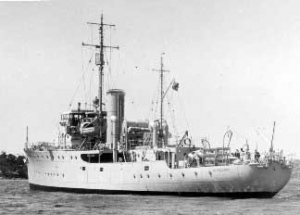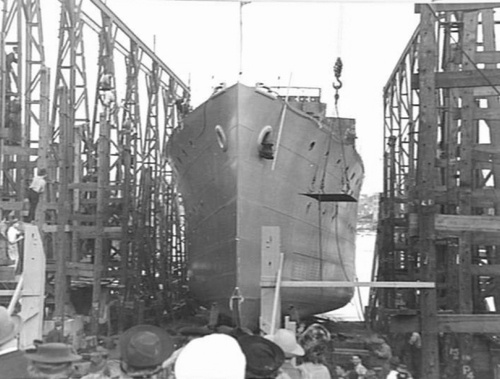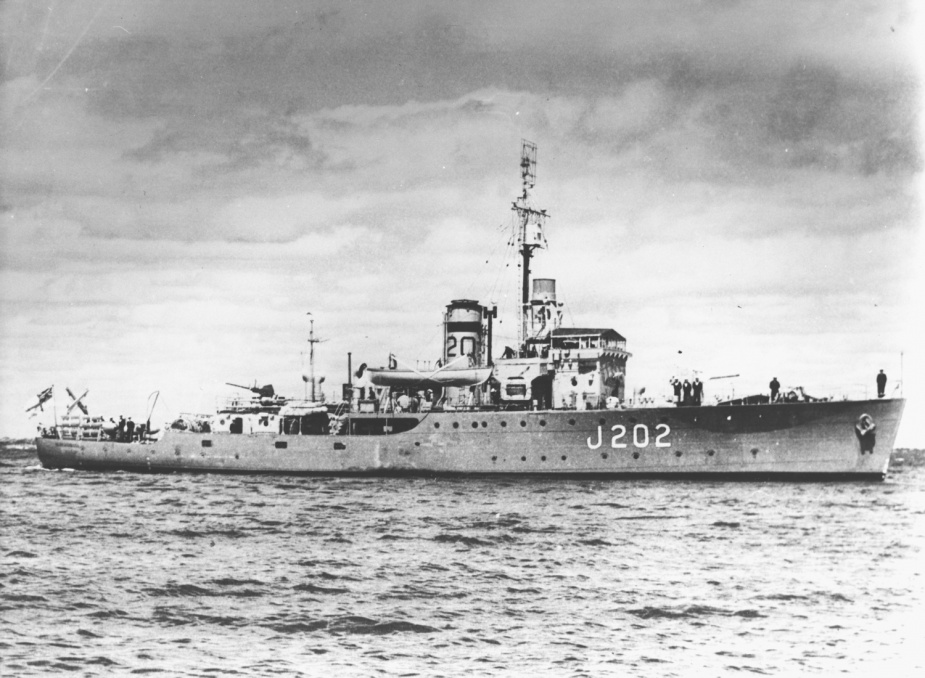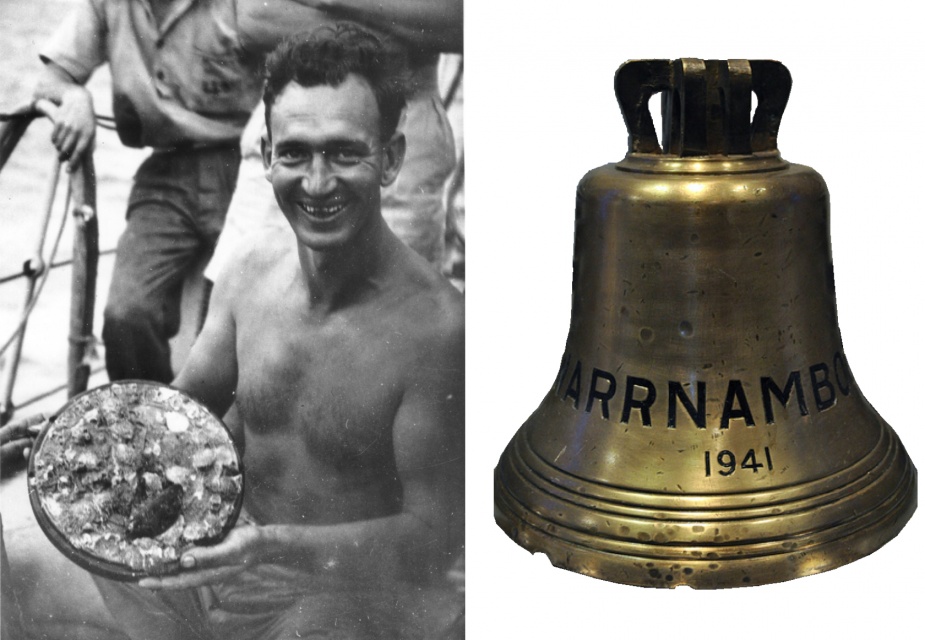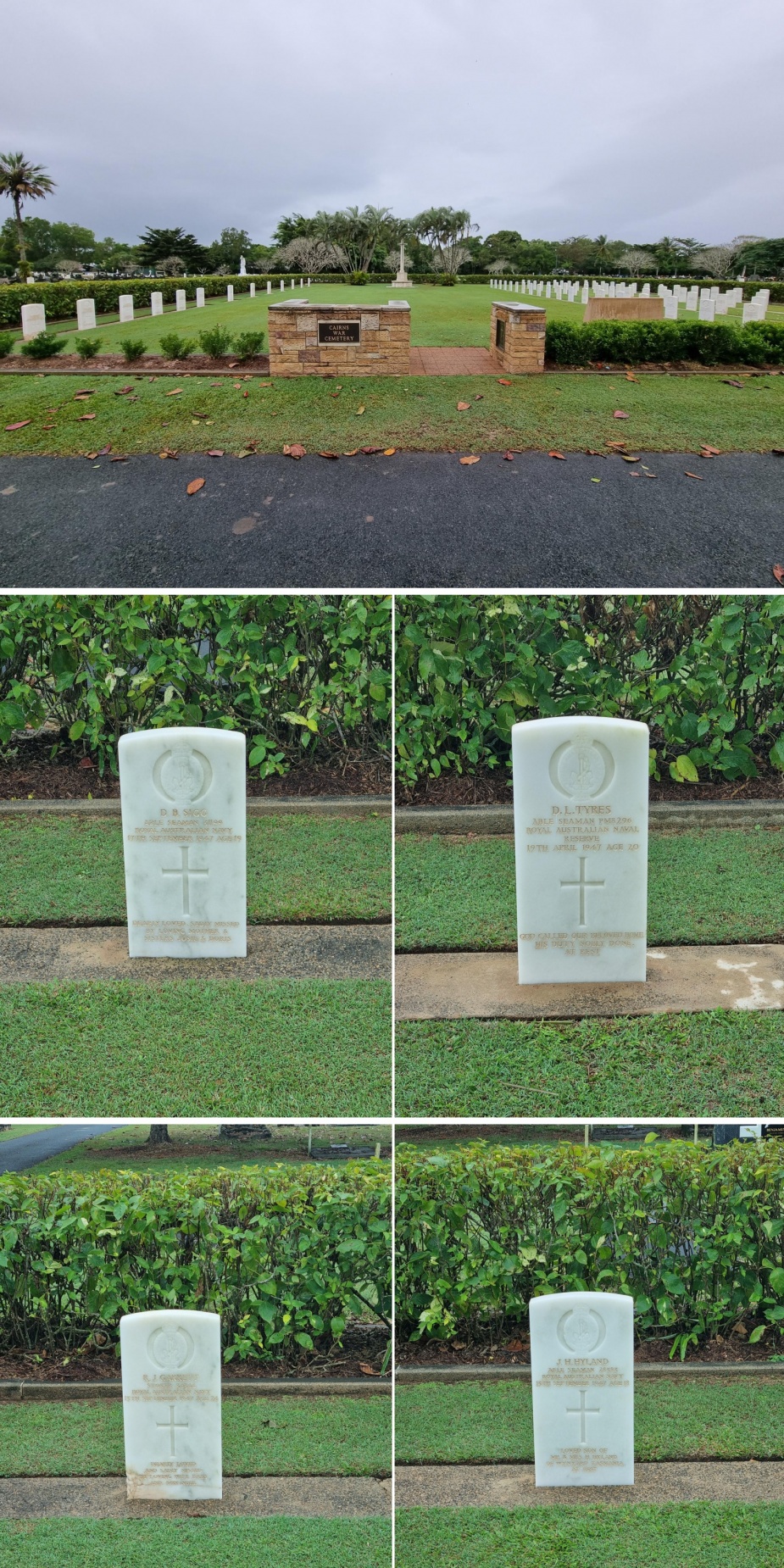HMAS Warrnambool (I)
| Class |
Bathurst Class |
|---|---|
| Type |
Australian Minesweeper |
| Pennant |
J202 |
| Builder |
Mort's Dock & Engineering Co Ltd, Sydney |
| Laid Down |
13 November 1940 |
| Launched |
8 May 1941 |
| Launched by |
Mrs Simpson, wife of a Director of Mort's Dock and Engineering Co Ltd |
| Commissioned |
23 September 1941 |
| Decommissioned |
13 September 1947 |
| Fate |
Lost at sea on 13 September 1947 |
| Dimensions & Displacement | |
| Displacement | 650 tons |
| Length | 186 feet |
| Beam | 31 feet |
| Draught | 8 feet 6 inches |
| Performance | |
| Speed | 15 knots |
| Complement | |
| Crew | 85 |
| Propulsion | |
| Machinery | Triple expansion, 2 shafts |
| Horsepower | 1750 |
| Armament | |
| Guns |
|
| Other Armament |
|
| Awards | |
| Battle Honours | |

HMAS Warrnambool (I) was one of sixty Australian Minesweepers (commonly known as corvettes) built during World War II in Australian shipyards as part of the Commonwealth Government’s wartime shipbuilding programme. Twenty were built on Admiralty order but manned and commissioned by the Royal Australian Navy. Thirty six (including Warrnambool (I)) were built for the Royal Australian Navy and four for the Royal Indian Navy.
Warrnambool was laid down on 13 November 1940 at Mort’s Dock and Engineering Co Ltd, Sydney, NSW. She was launched by Mrs ET Simpson, wife of a Director of Mort’s Dock, on 8 May 1941 and commissioned in the RAN at Sydney on 23 September 1941 under the command of Lieutenant Eric J Barron RANR(S).
Following completion of sea trials, Warrnambool (I) was immediately engaged in patrols in Bass Strait before proceeding to northern Australian waters. She was present at Darwin when the first Japanese air raid occurred on 19 February 1942, but sustained no damage or casualties. The following day the ship rescued 73 survivors of the chartered US Army transport ship DON ISIDRO which had been attacked and set on fire by Japanese dive bombers. During the rescue operation Warrnambool (I) was bombed by a Japanese flying boat, but sustained no damage or casualties.
In the first twelve months of Warrnambool (I)’s commission, all except the first three of which were spent in northern waters, the ship had carried out five evacuations or rescue trips, been present during 18 air raids, and ferried 4000 troops in New Guinea. In July 1942, in company with HMAS Southern Cross, she carried Netherlands East Indies troops and stores from Darwin to Dobo, in the Aru Islands. In September 1942 Warrnambool (I) rescued survivors of the force from Dobo.
Later in September the ship assisted in the rescue of personnel of HMAS Voyager (II), which had grounded at Betano on the south coast of Timor while landing Australian troops and subsequently became a total loss.
Late in 1942 Warrnambool (I) transferred to the Australian east coast and spent most of the remainder of the war operating in that area on anti-submarine patrols and convoy protection. Late in September 1944 she proceeded to Fremantle where she was based until the end of February 1945. Warrnambool (I) then transferred to Darwin where she was based for the remainder of 1945.
Following the cessation of hostilities, Warrnambool (I) was present at the Japanese surrender at Koepang, Timor, on 11 September 1945.
Warrnambool (I)’s subsequent post war career consisted of mine clearance work in Solomons and New Guinea waters, followed by similar operations in the Great Barrier Reef area. On 13 September 1947 minesweeping operations were in progress in the Great Barrier Reef area to clear the defensive minefield laid by HMAS Bungaree during 1941-43 to protect entrances to the reef. Warrnambool was leader of the 1st division comprising her sister ships Mildura, Katoomba, HDML 1326 and HDML 1329. The operation was under the command of the Senior Officer, 20th Minesweeping Flotilla, in the sloop HMAS Swan. At 15:56 Warrnambool struck a mine. As a result of the explosion Signalman Norman Lloyd Lott, 28608 was lost overboard and listed as missing, believed killed. Thirty two men (three officers and 29 ratings) were injured. Stoker Ronald John Garrett, 34344, Ordinary Seaman John Herbert Hyland, 28583 and Able Seaman Donald Bain Sigg, 31199 subsequently died from the injuries they sustained. All of those killed were from Victoria.

